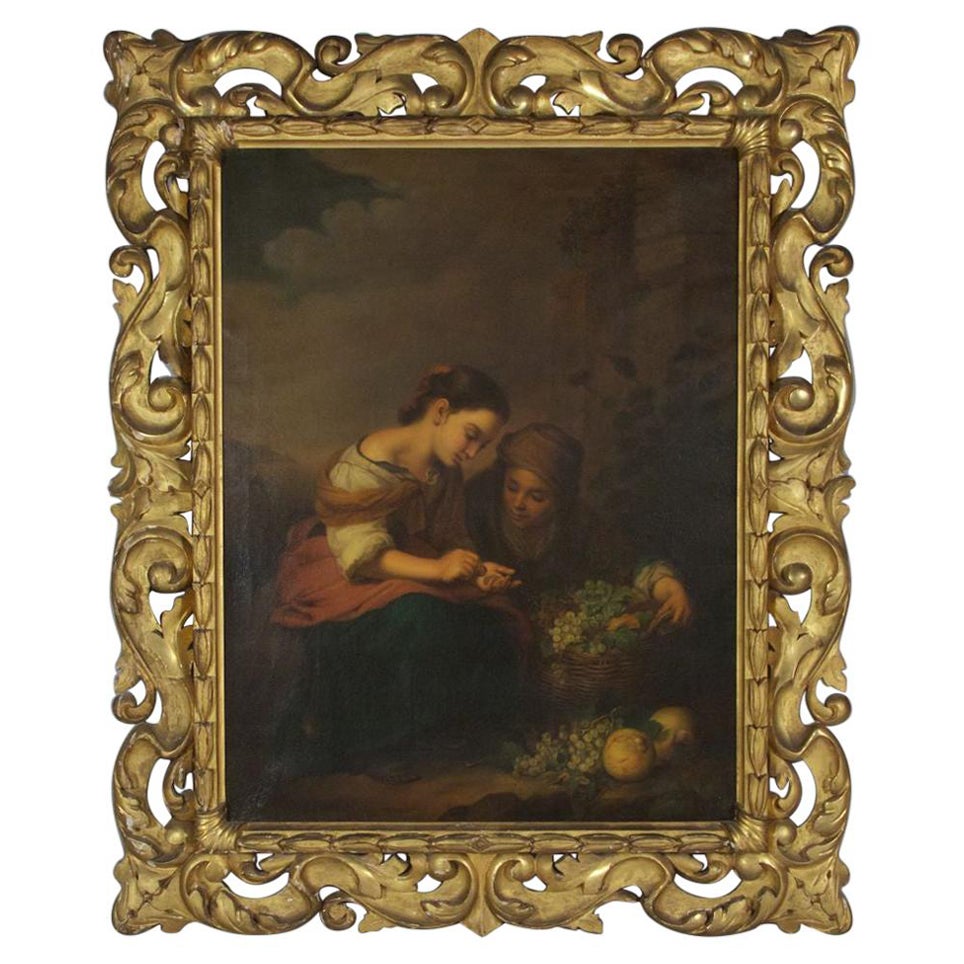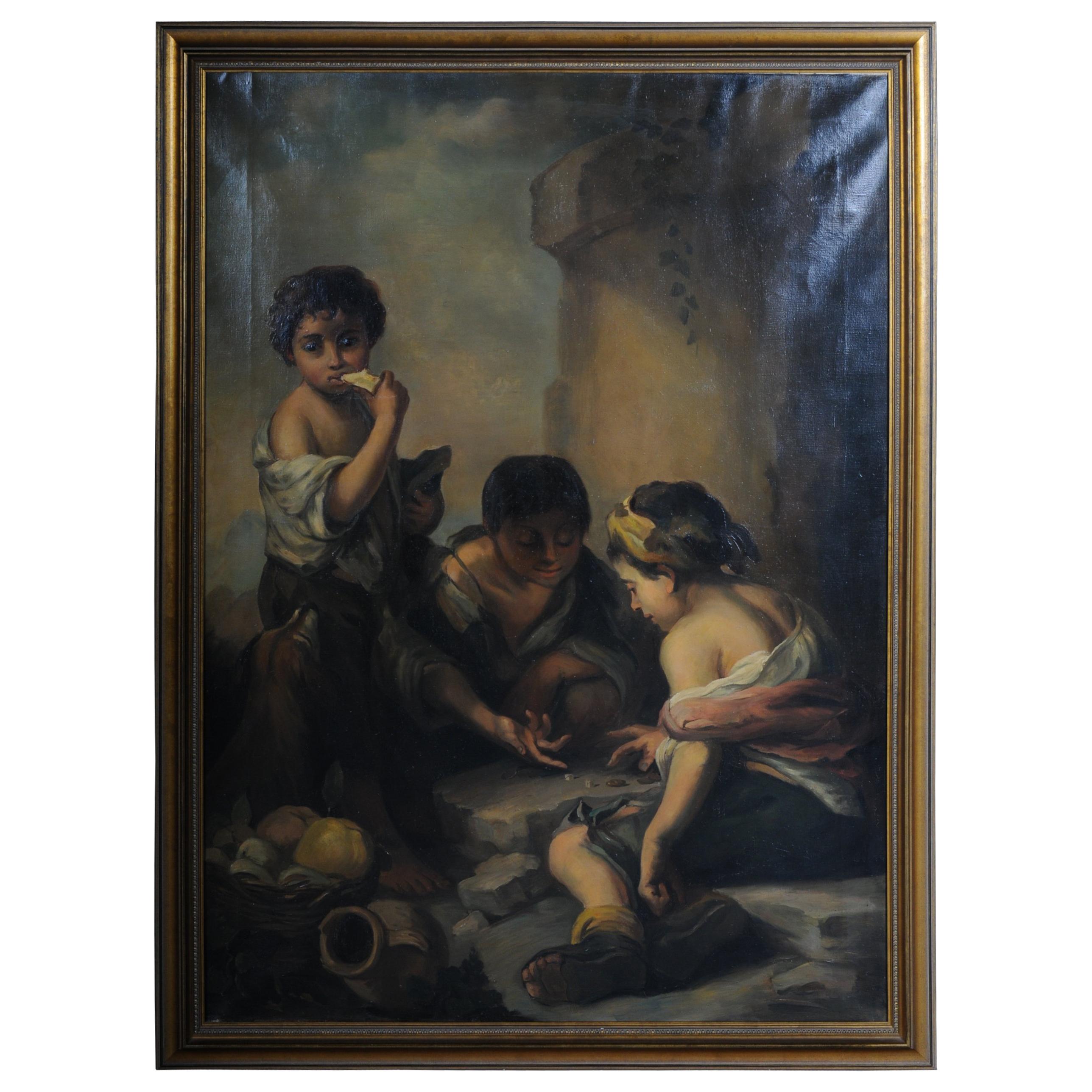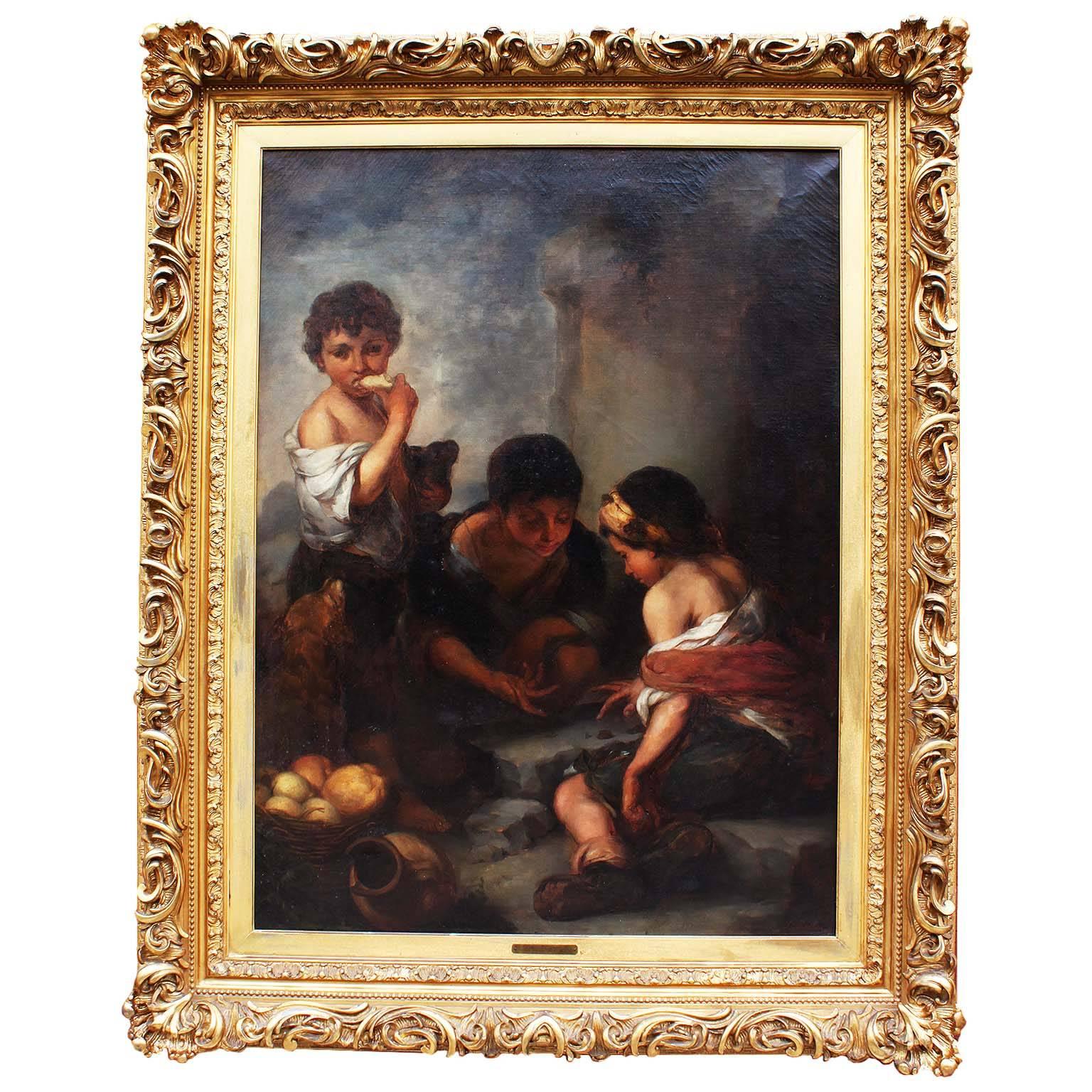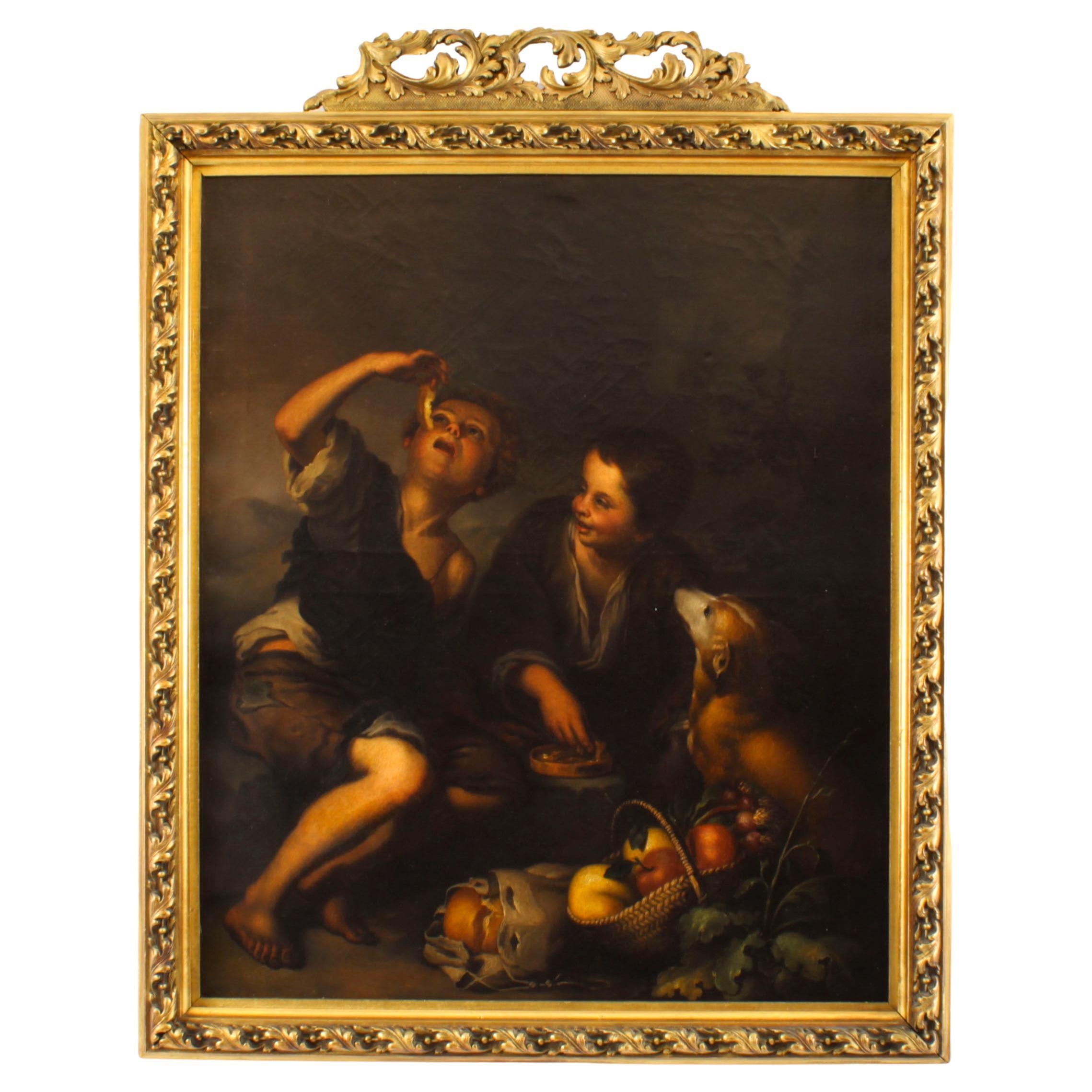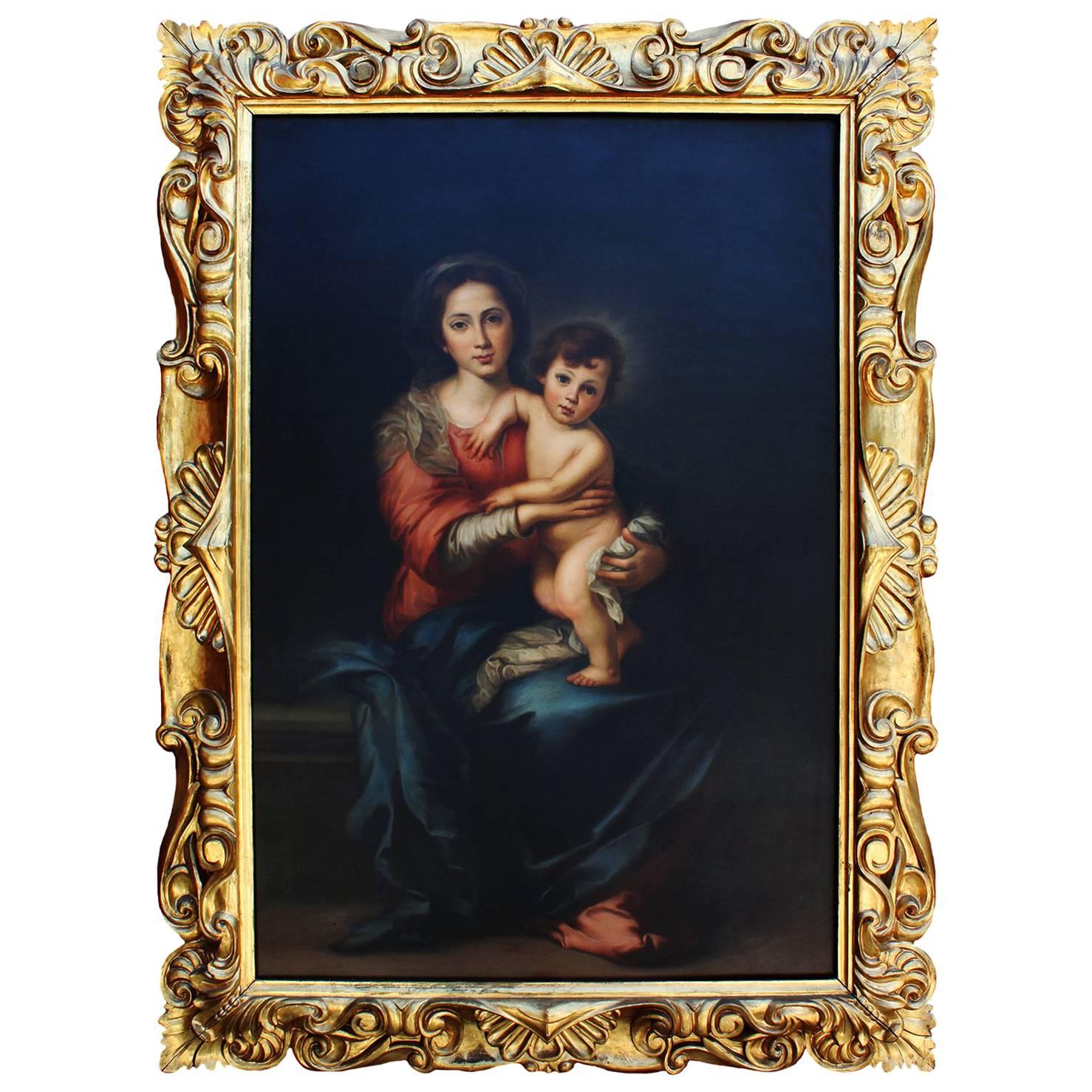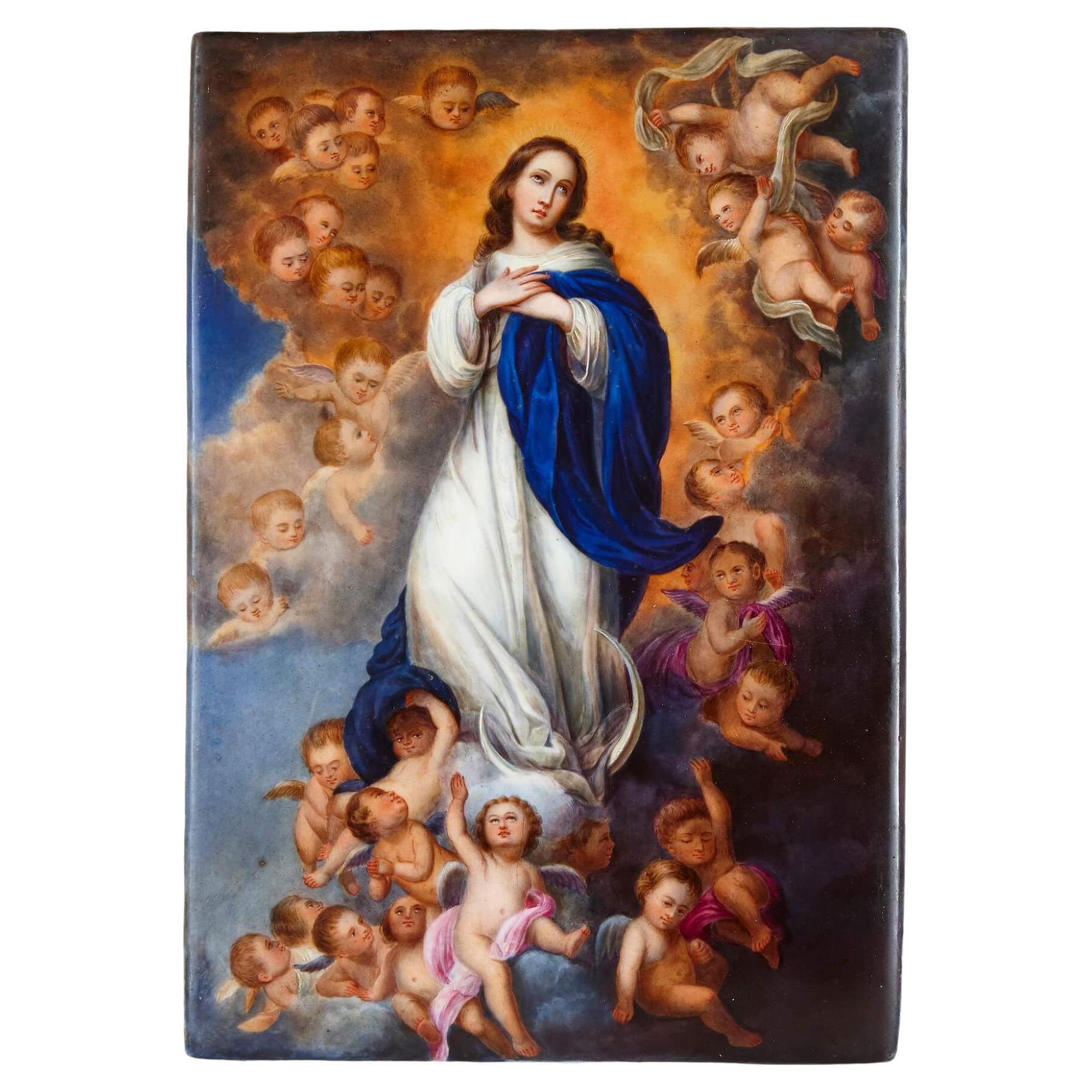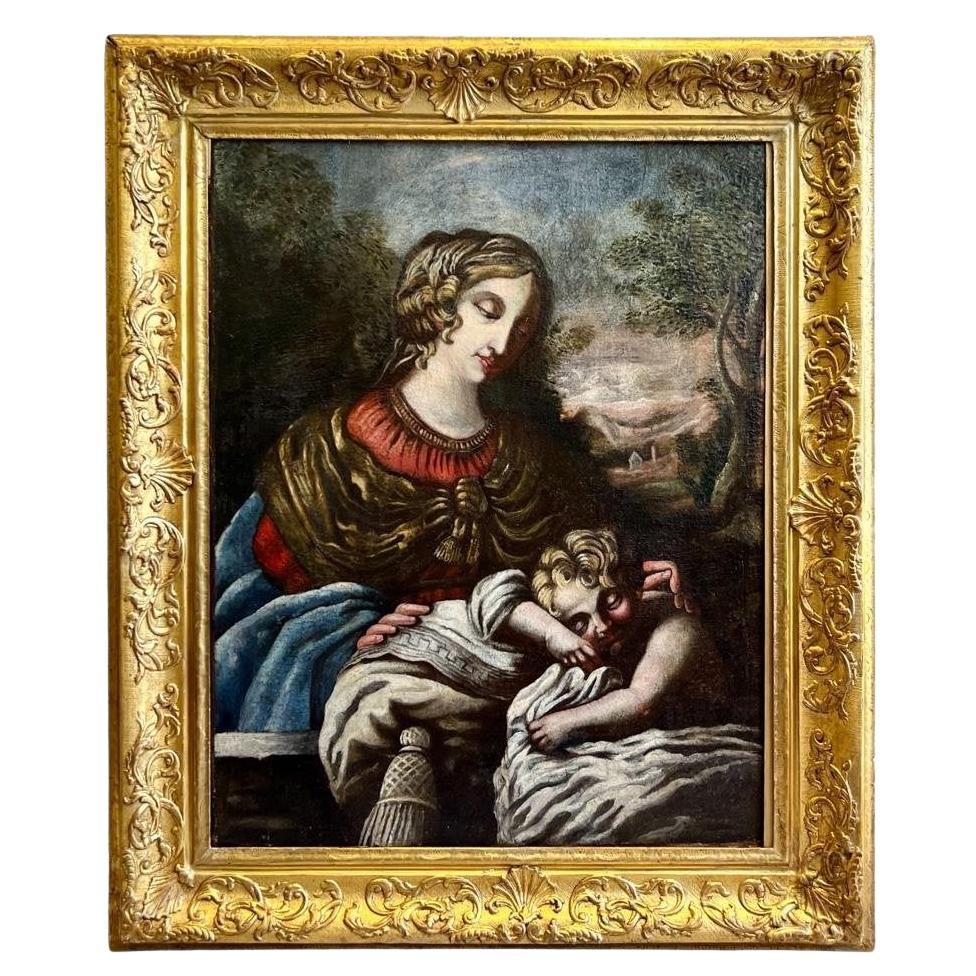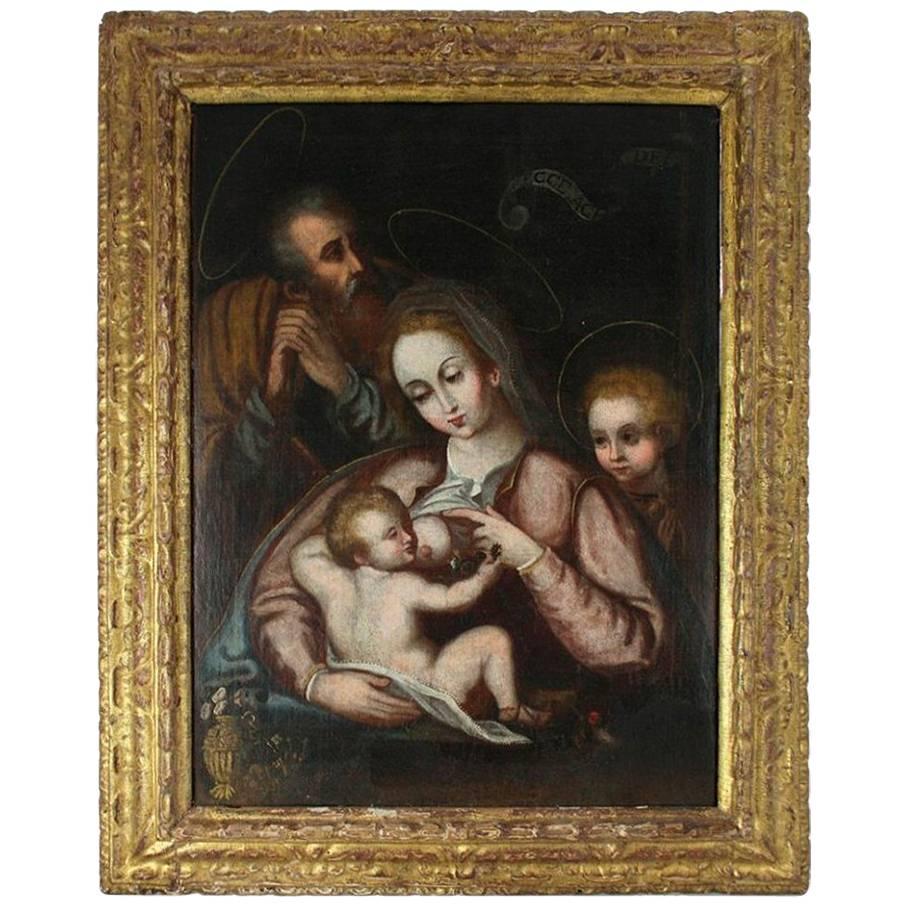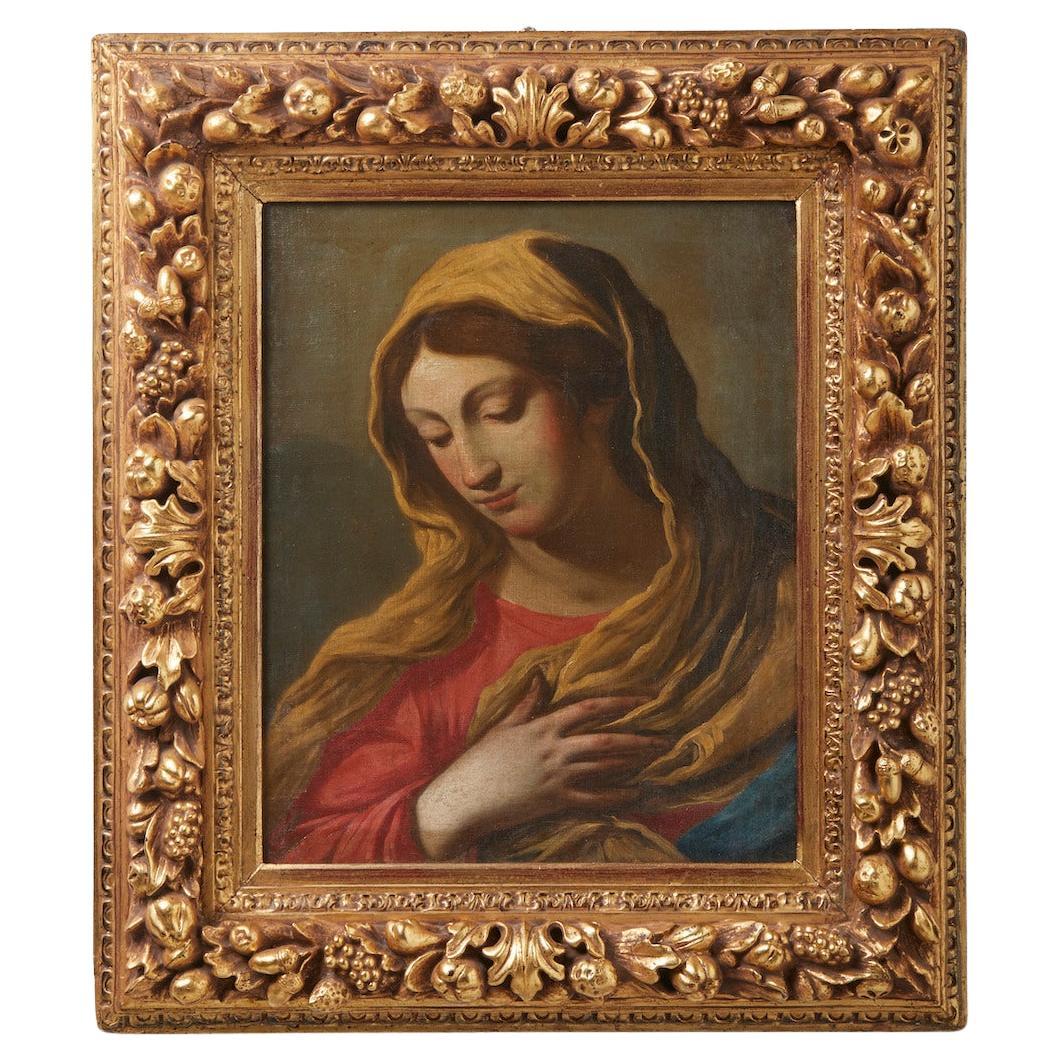
After Bartolomé Esteban Murillo "Virgin and Child" 17th Century Style
View Similar Items
1 of 6
After Bartolomé Esteban Murillo "Virgin and Child" 17th Century Style
About the Item
- Similar to:Bartolomé Esteban Murillo (Painter)
- Dimensions:Height: 23.63 in (60 cm)Width: 19.69 in (50 cm)Depth: 5.91 in (15 cm)
- Materials and Techniques:
- Place of Origin:
- Period:
- Date of Manufacture:Unknown
- Condition:Wear consistent with age and use.
- Seller Location:EVREUX, FR
- Reference Number:1stDibs: LU5673223759992
You May Also Like
- "The Little Fruit Seller" Oil on Canvas After Bartolomé Esteban MurilloBy Bartolomé Esteban MurilloLocated in New York, NYA 19th century Italian oil on canvas replica of "The little fruit seller" after Bartolomé Esteban Murillo (1617-1682) in an original 19th cen...Category
Antique Late 19th Century Italian Baroque Revival Paintings
MaterialsCanvas, Wood
- Religious oil painting, 19 th c. 'After' Bartolome’ Esteban Murillo '1617-1682'Located in Houston, TXThis exquisite painting is rich in color exhibiting age and great Quality. It is framed in a gilt baroque antique frame. The artist is Portraying the story of Rebecca and Eliezer...Category
Antique Late 19th Century Spanish Paintings
MaterialsPaint
- Antique Painting “Madonna with a Napkin” after Bartolome Esteban Murillo, 1666Located in Vero Beach, FLAntique painting “Madonna with a Napkin” after Bartolome Esteban Murillo, 1666 This lovely oil painting on beveled wood panel is after the f...Category
Early 20th Century Spanish Baroque Paintings
MaterialsWood
- Great Painting Grapes and Melon Eaters After Esteban Murillo Oil of CanvasBy Bartolomé Esteban MurilloLocated in Berlin, DEThe picture shows two about ten-year-old street boys eating fruit. The environment is not further defined. With obvious pleasure, the left street boy is eating a grape while the righ...Category
20th Century European Paintings
MaterialsCanvas
$1,738 Sale Price20% Off - Large Oil on Canvas "Beggar Boys Playing Dice" After Bartolomé Esteban MurrilloBy Bartolomé Esteban MurilloLocated in Los Angeles, CAA fine and large 19th century oil on canvas after Bartolomé Esteban Murrillo's (Spanish, 1617-1682) "Beggar Boys Playing Dice" (The original work by Murillo was painted in 1675). The impressive artwork depicts two young boys playing dice while another eats a piece of fruit as his dog watches on., within an ornate gildwood and gesso frame bearing a label from the faming company Bigelow & Jordan. The original work by Murillo is currently at the Alte Pinakothek Museum in Munich, Germany. The present work is signed: L. Rüber. Circa: Munich, Late 19th Century. Bartolomé Esteban Murillo (born late December 1617, baptized January 1, 1618 – April 3, 1682) was a Spanish Baroque painter. Although he is best known for his religious works, Murillo also produced a considerable number of paintings of contemporary women and children. These lively, realist portraits of flower girls, street urchins, and beggars constitute an extensive and appealing record of the everyday life of his times. Murillo was born to Gaspar Esteban and María Pérez Murillo. He may have been born in Seville or in Pilas, a smaller Andalusian town. It is clear that he was baptized in Seville in 1618, the youngest son in a family of fourteen. His father was a barber and surgeon. His parents died when Murillo was still very young, and the artist was largely brought up by his aunt and uncle. Murillo began his art studies under Juan del Castillo in Seville. There he became familiar with Flemish painting and the "Treatise on Sacred Images" of Molanus (Ian van der Meulen or Molano). The great commercial importance of Seville at the time ensured that he was subject to influences from other regions. His first works were influenced by Zurbarán, Jusepe de Ribera and Alonzo Cano, and he shared their strongly realist approach. As his painting developed, his more important works evolved towards the polished style that suited the bourgeois and aristocratic tastes of the time, demonstrated especially in his Roman Catholic religious works. In 1642, at the age of 26, he moved to Madrid, where he most likely became familiar with the work of Velázquez, and would have seen the work of Venetian and Flemish masters in the royal collections; the rich colors and softly modeled forms of his subsequent work suggest these influences. In 1645 he returned to Seville and married Beatriz Cabrera y Villalobos, with whom he eventually had eleven children. In that year, he painted eleven canvases for the convent of St. Francisco el Grande in Seville. These works depicting the miracles of Franciscan saints vary between the Zurbaránesque tenebrism of the Ecstasy of St Francis and a softly luminous style (as in Death of St Clare...Category
Antique Late 19th Century German Baroque Paintings
MaterialsGesso, Canvas, Wood
$14,950 Sale Price40% Off - Antique Painting Grape and Melon Eaters After Bartolome' Murillo 18th CLocated in London, GBThis is a delightful antique Spanish oil on canvas painting after Bartolome' Esteban Murillo, depicting two peasant boys eating grapes and melon, Circa 1780 in date. It features a...Category
Antique 1780s Spanish Paintings
MaterialsCanvas
Recently Viewed
View AllMore Ways To Browse
Religious Angel Paintings
Angel Painting 17th Century
Religious Mother And Child
Seville Antique
Baroque Painting Angel
Life Size Religious
Antique Franciscan
Francisco Ribera
Pedro Castillo
Chinoiserie Woman Painting
Antique Oyster Painting
God Save The King
Danish Mural
Men Bathing
Hunting Wallpaper
Spanish Colonial Painting Angel
Girl Knitting
Joseph Albers Painting
